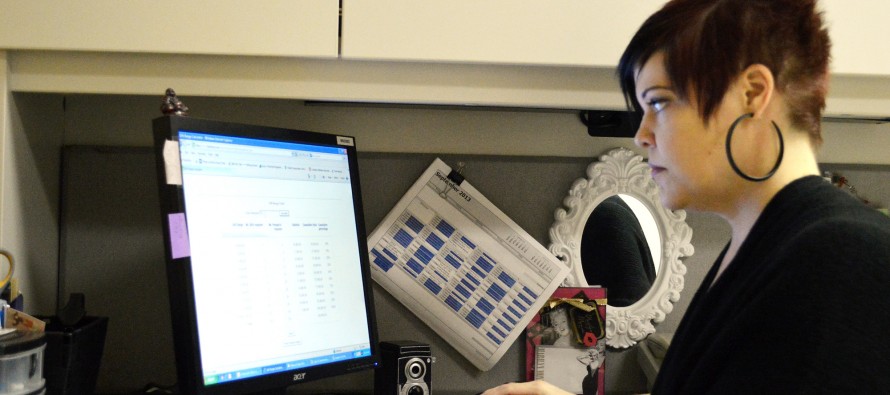How to budget for a charitable event


WINDSOR, ON.: Canadian Diabetes Association Ontario account manager Katie Vanner-Sylvester works on the budget for the 2014 Annual Flame of Hope Walk, Run and Ride in her office at 2605 Howard Avenue, Nov. 5. (Photo by/Richard Riosa)
By Richard Riosa
Canadian Diabetes Association executives say accuracy and detail are crucial when budgeting for a charitable event.
The CDA is a national non-profit organization which operates regional offices supporting diabetes research, education and advocacy to the government. The Windsor and District Branch holds many different charitable events each year.
Ontario account manager for the CDA Katie Vanner-Sylvester said planning of next fall’s Annual Flame of Hope Walk, Run and Ride has already begun. Vanner-Sylvester said she hopes the event, which was not held this year, can match the success of 2012’s Flame of Hope. She said it is important to look to past events when estimating the types of expenses they will incur and their cost. Accurate estimates of sponsorship and pledge amounts, she said, are also influenced by past events.
The budget for the 2012 Run estimated total expenses of $6,025 and revenue of $20,000. Although Vanner-Sylvester said she was unable to provide the expense numbers for the event, she said the actual revenue was $21,345. She said the accuracy of these estimates was an important part of the success of the event.
“Everything I do has every risk, every opportunity, every dollar amount, because we are donor based,” said Vanner-Sylvester. “Everything we do comes from our donors and that’s a lot of responsibility on our shoulders.”
Local chartered accountant and partner with Roth Mosey & Partners LLP Anthony Mascaro said he agreed with the importance of accurate estimates of expenses. Mascaro said in order to determine an accurate target revenue for a charity event, it is imperative to be accurate in estimations of the expenses.
Joyce Montrose, the CDA’s coordinator of public programs and services at the Windsor branch, is in charge of budget planning for next year’s Flame of Hope. She said charitable events are essential to the CDA’s survival.
“They (charity events) are essential to the Canadian Diabetes Association because all of our funding comes from donor dollars,” said Montrose. “We don’t get government subsidies or things of that nature.”
Montrose said she will also make time for contingency planning when budgeting for the event. Because she has experienced issues running events in the past, she said she knows the importance of a good back-up plan.
Mascaro said the most important aspect of budgeting is learning from past events. A cost variance analysis, which calculates the difference between estimated and real costs of expenses, can be helpful in planning future events and help strengthen accuracy, according to Mascaro.
“You want to be able to explain those differences (between real and estimated costs) so that you can learn from the event and next time you can make it a more profitable venture for the organization,” said Mascaro.
Vanner-Sylvester said although the CDA will look to maximize their profits for the event, they are also looking to achieve the organization’s overall strategic objectives such as educating people and preventing diabetes.
“When we’re building our budget, we look at not just making up our expenses and having a profit at the end of the day, which we then invest back into our services,” said Vanner-Sylvester. “But we also look at the impact it’s going to have on our community.”


